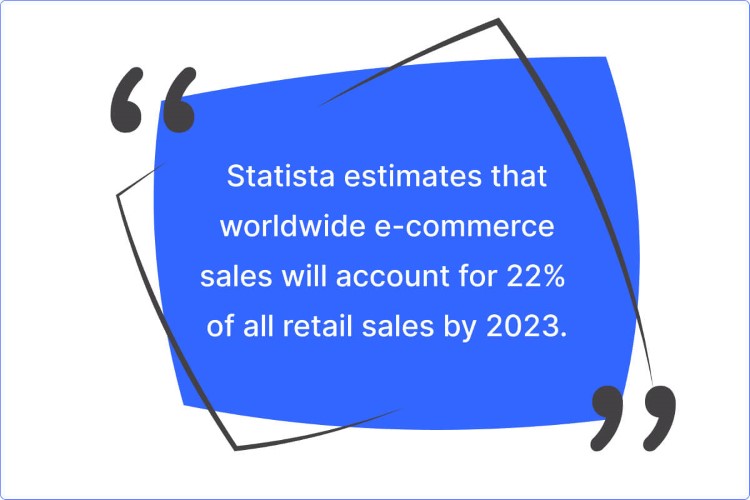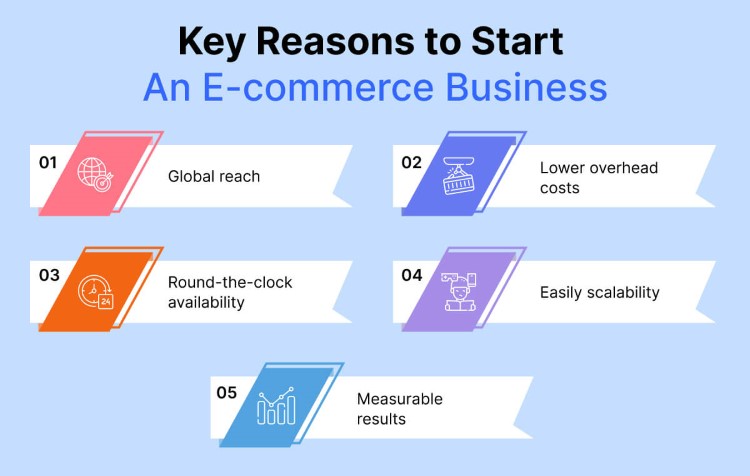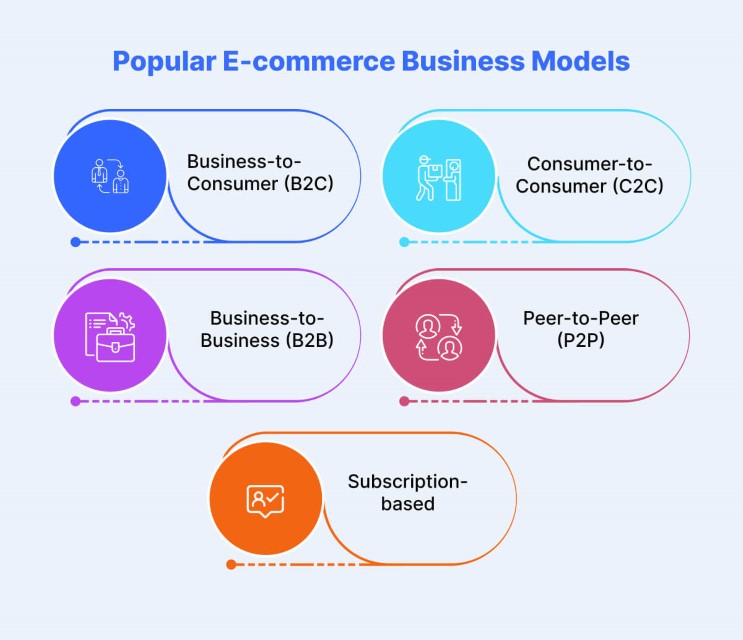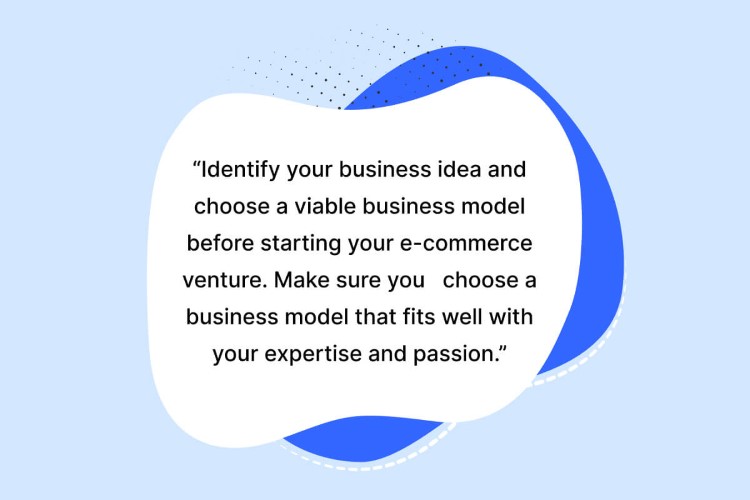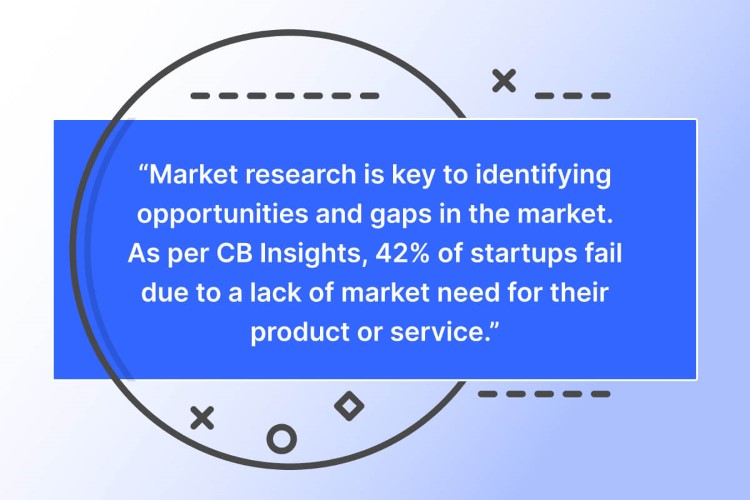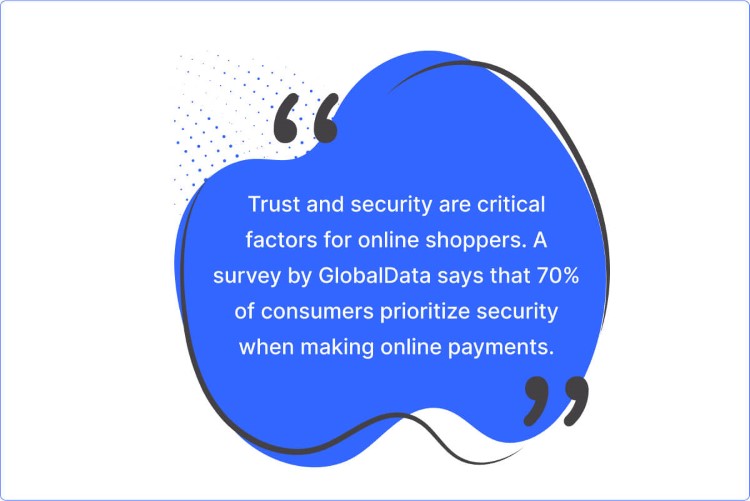Starting an e-commerce business could be both exciting as well challenging. It’s exciting because it opens up a window of opportunities and possibilities in the thriving world of the digital marketplace. It’s challenging because setting up an e-commerce enterprise involves hard work and persistence.
However, there couldn’t be a better time than now to embark on the exciting journey of an e-commerce business as online shops are becoming increasingly popular. Moreover, advancements in technology can help you achieve new heights with your digital venture and ensure a global reach in a cost-effective manner.
However, the road to starting a new e-commerce enterprise will require careful planning and strategic execution on your part. It will also involve extensive research before you hit the ground running.
In this blog, we will explore the key steps to starting your online shop and discuss various e-commerce business models that you can choose from.
But before we proceed, let’s first understand what exactly an e-commerce business is…
What is E-commerce Business?
When considering starting your own e-commerce venture, it’s essential to research and find the best LLC service to ensure your legal structure aligns with your business goals.
In an e-commerce business, customers enjoy the convenience of browsing products from anywhere, making purchases, and completing transactions digitally. This mode of business encompasses a wide range of offerings, from physical products that are shipped to downloadable digital products that can be accessed online. Virtually everything can be sought and sold in this form of business.
Furthermore, e-commerce businesses can be categorized into three primary types. The first type involves businesses selling directly to customers. The second type involves businesses selling to other businesses. And the third type involves individuals selling to other individuals.
Key Reasons to Start An E-commerce Business
The e-commerce space is thriving and growing at an incredible pace. It seems like every enterprise has now established a presence in the digital landscape. Between 2021 to 2025, e-commerce sales are expected to grow by 50%.
Here are some key reasons to venture into the electronic enterprise:
- Global reach: The moment you open an online store, it becomes accessible to customers from all around the world. People from any corner of the globe can reach you and access your products or services, presenting incredible opportunities as an entrepreneur.
- Lower overhead costs: You can establish an online store without the need for physical space or a large workforce. Tools and technology are available to assist you at every step, from setting up the shop to streamlining operations. This can result in significantly lower overhead costs.
- Round-the-clock availability: An online store is always open, capable of catering to customers across different time zones and geographical locations. By being accessible at all times, the chances of generating sales and revenue increase significantly.
- Easy scalability: Compared to physical stores, expanding e-commerce businesses and adapting to growing customer demand is much easier. You can scale the business effortlessly without requiring substantial investments and make it seamlessly fit into the evolving market.
- Measurable results: One of the key benefits of running a digital business is having access to customer data and insights. As an entrepreneur, you can track customer purchase behavior, gather demographic information, and make informed marketing and sales decisions based on measurable results.
Popular E-commerce Business Models
An e-commerce business can take various forms. Each form has its own considerations and advantages. You can combine different models and create unique approaches to achieving the set targets. After all, they all together make up for 20% of global retail sales.
There are different e-commerce business models around, including:
- Business-to-Consumer (B2C) – A B2C model is when a business sells products or services directly to individual customers through an online platform. Amazon is an example of this popular business model.
- Consumer-to-Consumer (C2C) – In this business model, individuals, not businesses, are engaged in selling products to other individuals through a web store. eBay is a good example of the C2C model.
- Business-to-Business (B2B) – As the name suggests, this type of e-commerce business model involves transactions between two companies where individual customers are not involved.
- Peer-to-Peer (P2P) – Uber is a perfect example of the P2P model, where individuals connect with each other and share or rent their services or assets.
- Subscription-based – In this type of e-commerce business model, a company provides a service or product and charges a subscription fee. Netflix is a good example of this model.
How to Start An E-commerce Business?
Starting an e-commerce business can be the best decision your business might make to realize its true potential. Once you take your business on the internet, it can have access to a global audience and stay available across time zones and geographies. However, it takes the right planning and execution to achieve success with an e-commerce enterprise.
Here are the key steps to starting an e-commerce business:
1. Identify Your Business Idea
Before starting an e-commerce business, you first need to have a viable business idea in mind. This business idea or plan should consider your interests and expertise. More importantly, it should also sync well with market demand.
It’s always a good strategy to choose a niche or product category that you have passion for and that you want to excel at. If your business plan aligns with your motivations and interests, your chances of success are always higher.
To identify your business idea, some of the key considerations include –
- Always choose a business model that fits well with your knowledge and skills so that you enjoy it and show passion for it.
- It’s equally important to research the market, find the gaps and see where you can add value to customers or how your products or services could be value addition.
- Analyze your market segment thoroughly, see what competitors are doing, and understand how your business can fix customer problems differently than others.
- You must also assess the feasibility of your business idea and check whether it can generate sustainable revenue and ensure better ROI over time.
2. Market Research
Market research is always the first step when it comes to starting a business, and e-commerce is no different. It can help you collect vital information about your target market, industry, competitors, and customers.
When you do market research, you can understand the industry trends better and know what your customer’s preferences are. The data you collect and analyze will prove very helpful in making informed decisions for marketing, sales, and other aspects.
Market research for an e-commerce business may involve many things, including –
- Start the research with a well-defined objective so that you can head in the right direction from the very start.
- Focus only on the target audience you intend to cater to and analyze their motivations, demographics, interests, etc.
- Analyze industry trends and carry out a detailed competitor analysis market to gain a good knowledge of the e-commerce industry.
3. Create a Business Plan
Once the market research is complete, the next key step is developing a business plan for starting an e-commerce business. This plan is essential for outlining your goals, marketing strategy, and other key details. A well-developed business plan can help a lot with your decision-making process and serve as a guide for your business.
The same business plan could also be shared with potential investors and partners to secure support and patronage. This is how you can communicate your business idea to the world and to those who matter the most.
A good business plan often includes the business concept, mission, vision, core values, USP, target market, and business model. It should also detail your marketing and sales approach and the channels for reaching to the audience.
4. Choose Your E-Commerce Business Model
Choosing the right business model will be key to the potential growth and success of your e-commerce enterprise. The business model you choose should be a reflection of your area of expertise, skills, preference, and more importantly, your passion.
The good thing, there are quite a few business models that you can choose from and realize your goals. The key is to analyze the pros and cons of each model and see which one fits well with your business goals.
Popular e-commerce models to choose from –
- B2C (Business-to-Consumer)
- B2B (Business-to-Business)
- C2C (Consumer-to-Consumer)
- Subscription-based
- Hybrid Model
Each business model is unique and your priority should be choosing the one that aligns with business goals and targets.
5. Set Up Your Online Store
After you have analyzed your business model and have a business plan ready, it’s time to set up your online store. It’s like giving shape to your e-commerce ambition. An online store is where you will list your products so that potential customers can browse them and purchase them.
Setting up an online store has several elements, including –
- Choosing an e-commerce platform – To set up an online store, you will need an e-commerce platform that has all the features required by your business. Some of the popular platforms include Magento, Shopify, and WooCommerce.
- Register a domain name – A domain name will be the unique address that your e-commerce store will have on the internet. It’s therefore important to choose a domain name that is memorable and that aligns with your brand.
- Design your online store – Good e-commerce businesses have online stores that are often appealing and user-friendly in design. Apart from being responsive, the design should also be mobile-friendly to cater to the smartphone generation.
- Add product listings – Once the online store design is ready, you should think of adding product listings. It’s important to create high-quality images and detailed descriptions of each product so that customers can understand the offers easily.
6. Set Up Payment Gateway
Setting up a payment gateway is a key step when you plan to start an e-commerce business. It will help you securely accept payments from your customers. A payment gateway will ensure smooth and secure transactions.
You also need to select a payment gateway that not only supports all the payment methods but also offers security measures to safeguard your customer data. It’s important to find secure payment processing providers that align with your business goals
Key things to remember with a payment gateway system –
- The payment gateway you choose must meet industry security standards to ensure the safety of sensitive customer information.
- You need to implement SSL certificates as additional security measures to ensure the secure transmission of information between your business and customer. There are so many cheap SSL certificate providers available out there. So, it won’t cost you so high.
7. Configure Shipping and Logistics
An e-commerce business must ensure smooth order fulfillment and delivery to its customers. To achieve this goal, it’s important to determine shipping options and set up shipping rules. The key consideration is always to decide whether your business wants to handle shipping on its own or wants to outsource it to a third party. It’s important to select shipping carriers that fit well with your business needs. FedEx and DHL are two of the most popular option for shipping purposes.
Key considerations with shipping and logistics include –
- You can always define shipping zones in tune with the regions or countries you intend to serve.
- Integrate the shipping carrier with your e-commerce platform and enable order tracking for customers.
- Make sure you clearly display shipping policies and details on your website.
8. Launch Your Online Store
Once everything is set in order, you can go ahead and launch your online store. It’s however important to first test the functionality and performance of your store before launching it. After launching a store, you can then start promoting it across channels.
Support Your E-commerce Business with REVE’s Advanced AI Tools
Starting an e-commerce business is always a big decision as it involves lots of time, effort, and resources. So, as an entrepreneur, you’d wish to achieve success with your endeavor. You can make your e-commerce venture excel and grow when you have the right tools and technology at your disposal.
We, at REVE Chat, are familiar with the challenges that the successful running of an online store requires. To help such businesses, we have top-quality engagement and support tools.
You can use our AI-powered chatbot to automate tasks across marketing, sales, and support of your e-commerce business. Our video chat and co-browsing software can prove very helpful in ensuring visual support to your customers.
The live chat software we offer can be paired with the bot to ensure hybrid support.
Final Thoughts
It requires lots of hard work and persistence to achieve success with a business and your e-commerce venture is no different. With the help of the right strategy and planning, coupled with the support of the best tools, you can make your enterprise a success.
With REVE Chat, you can find the right tools and technology for supporting the vision of your e-commerce enterprise.
You can sign up and check our engagement and support tools for your e-commerce enterprise.

